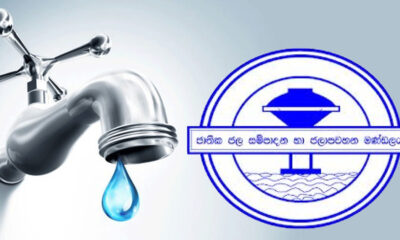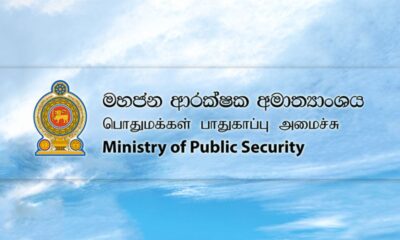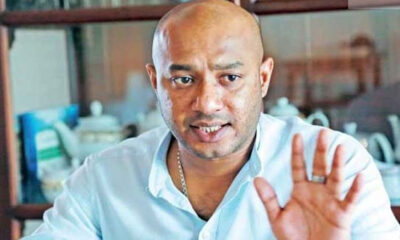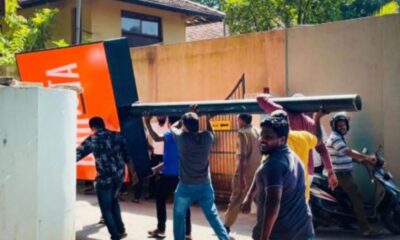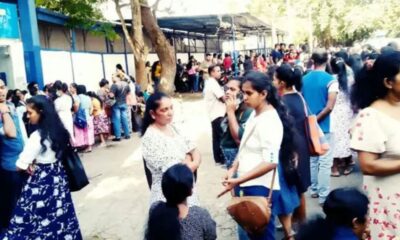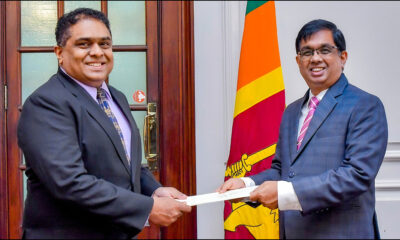FEATURES
The Indian film showing the bride’s ‘humiliation’ in arranged marriage
Published
3 months agoon
By
editor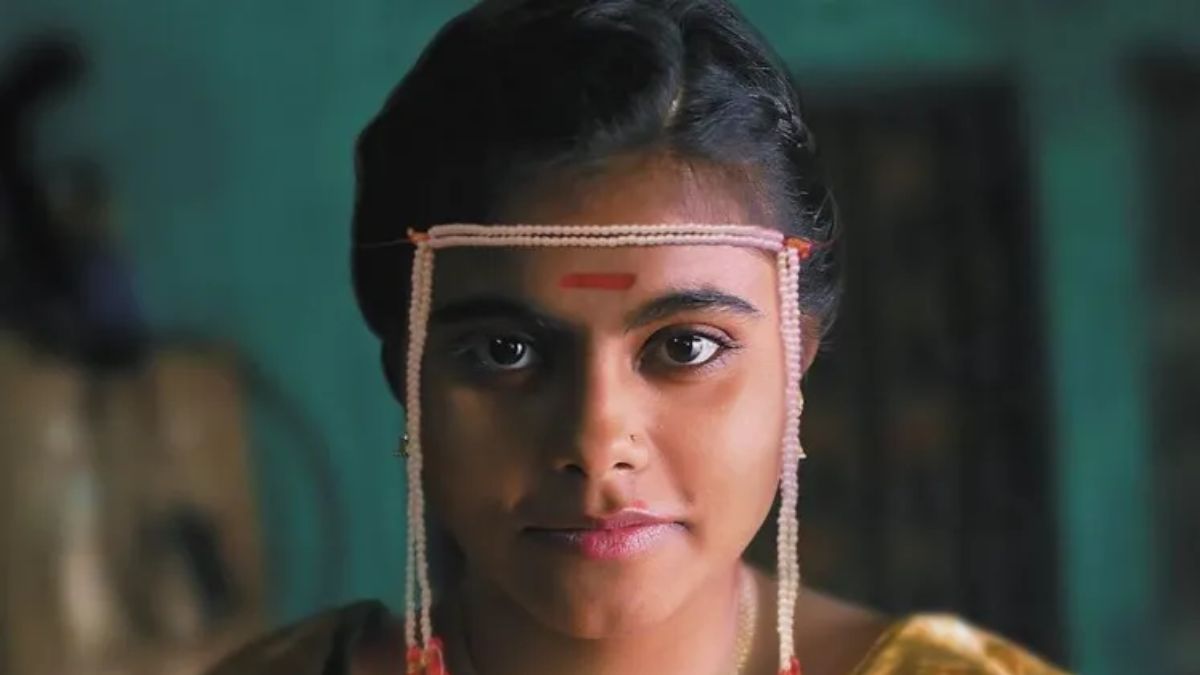
The film centres around Savita, a young woman striving for an education and a career in a patriarchal society
It is often said that marriages are made in heaven.
But in India, where a majority of marriages are arranged, the process of match-making can feel like a passage through hell for a woman and her family.
That’s the premise of Sthal: A Match, the 2023 gritty Marathi-language film that has won several prestigious awards at festivals in India and abroad. It is releasing for the first time in theatres in India on Friday.
Set in rural Maharashtra state, the film centres around Savita, a young woman striving for an education and a career in a patriarchal society, and the attempts by her father Daulatrao Wandhare – a poor cotton farmer – to find a good husband for his daughter.
“He wants a good price for his crop and a good match for his daughter,” says director Jayant Digambar Somalkar.
The film is notable for the unflinching way it portrays what its lead actress calls the “very humiliating” experience of many young women, unlike other Indian movies about arranged marriage.
Sthal has also grabbed attention as its entire cast is made up of first-time actors chosen from the village where it is shot. Nandini Chikte, who plays Savita, has already won two awards for her brilliant performance.

With eyes downcast, Savita sits on a wooden stool facing a group of men who’ve come to assess her for marriage
The film opens with a sequence where Savita is interviewing a prospective groom.
Along with her female relatives and friends, she watches as the young man serves them drinks from a tray. They laugh when he, visibly nervous, fumbles during questioning.
Rudely awakened from what turned out to be a dream, Savita is told to get ready as a group of men are coming to see her.
In reality, the gender roles are completely reversed, and in a scene that’s replayed several times in the nearly two-hour film, Savita’s humiliation comes into sharp focus.
The prospective groom and other men from his family are welcomed by Savita’s father and male relatives. Guests are fed tea and snacks and once the introductions are done, Savita is called in.
Dressed in a sari, with eyes downcast, she sits down on a wooden stool facing her interrogators.
Questions come, thick and fast. What’s your name? Full name? Mother’s clan? Date of birth? Height? Education? Subject? Hobbies? Are you willing to work on the farm?
The men step out, to hold a discussion. “She’s a bit dark. She had makeup on her face, but did you not see her elbow? That is her real colour,” says one. “She’s also short,” he goes on to add. Others nod in agreement.
They leave, telling Daulatrao that they will respond in a few days to let him know their decision.
According to her parents, “this is the fourth or fifth time someone has come to see Savita” – all the earlier meetings have ended in rejection, leading to heartbreak and despair.
The scene rings true. In India, men often have a laundry list of attributes they want in their brides – a glance at the matrimonial columns in newspapers and match-making websites shows everyone wants tall, fair, beautiful brides.

In the film cotton farmer Daulatrao Wandhare (left) and his wife’s main aim in life is to find a good husband for their daughter
Savita’s protestations – “I don’t want to get married, I first want to finish college and then take civil services exams and build a career” – carry no weight in her rural community, where marriage is presented as the only goal worth having for a young woman.
“Marriage is given far too much importance in our society,” Chikte told the BBC. “Parents believe that once the daughter is married, they will become free of their responsibility. It’s time to change that narrative.”
- ‘I have been rejected by dozens of men over dowry’
- India viral wedding ad: The feminist looking for no-farting, no-burping man
She says she found it “very humiliating” that Savita was made to sit on a stool to be judged by all those men who discussed her skin colour, while there was no discussion about the prospective groom.
“I was only acting, but as the film progressed, I lived Savita’s journey and I felt angry on her behalf. I felt insulted and disrespected.”
The film also tackles the social evil that is dowry – the practice of the bride’s family gifting cash, clothes and jewellery to the groom’s family.
Though it has been illegal for more than 60 years, dowries are still omnipresent in Indian weddings.
Parents of girls are known to take out huge loans or even sell their land and house to meet dowry demands. Even that doesn’t necessarily ensure a happy life for a bride as tens of thousands are killed every year by the groom or his family for bringing in insufficient dowries.
In the film too, Daulatrao puts up a “for sale” sign on his land, even though farming is his only source of livelihood.

The film’s entire cast is made up of first-time actors chosen from the village where it is shot
Director Somalkar says the idea for his debut feature film is rooted in his own experience.
Growing up with two sisters and five female cousins, he had witnessed the ritual far too many times when prospective grooms visited his home.
“As a child you don’t question tradition,” he says, adding that the turning point came in 2016 when he accompanied a male cousin to see a prospective bride.
“This was the first time I was on the other side. I felt a bit uncomfortable when the woman came out and sat on a stool and was asked questions. When we stepped out for a discussion, I felt the conversation about her height and skin colour was objectifying her.”
When he discussed the issue with his fiancée at the time – who is now his wife – she encouraged him to explore it in his work.

Writer-director Jayant Digambar Somalkar says the idea for his debut feature film is rooted in his own experience
In a country where 90% of all marriages are still arranged by families, Sthal is not the first to tackle the subject on screen. IMDB has a list of nearly 30 films about arranged marriage made by Bollywood and regional film industries just in the past two decades.
More recently, the wildly popular Netflix show Indian Matchmaking focused entirely on the process of finding the perfect partner.
But, as Somalkar points out, “weddings are hugely glamourised” on screen.
“When we think of weddings in India, we think of the big fat wedding full of fun and glamour. We think of Hum Aapke Hain Koun,” he says, referring to the 1990s Bollywood blockbuster that celebrates Indian wedding traditions.
- The ‘cringeworthy’ Netflix show that is a huge hit
- Indian Matchmaking on Netflix: ‘Sima aunty’ raises eyebrows – again
“And the Netflix show only dealt with a certain class of people, the ones who are wealthy and educated and the women are able to exercise their choice.
“But the reality for a majority of Indians is very different and parents often have to go through hell to get their daughters married,” he adds.
His reason for making Sthal, he says, is to “jolt society and audiences out of complacency.
“I want to start a debate and encourage people to think about a process that objectifies women who have very little freedom to choose between marriage and career,” he says.
“I know one book or one film doesn’t change society overnight, but it can be a start.”
– Geeta Pandey
(BBC News)
You may like
FEATURES
Why the mighty Himalayas are getting harder and harder to see
Published
1 week agoon
May 14, 2025By
editor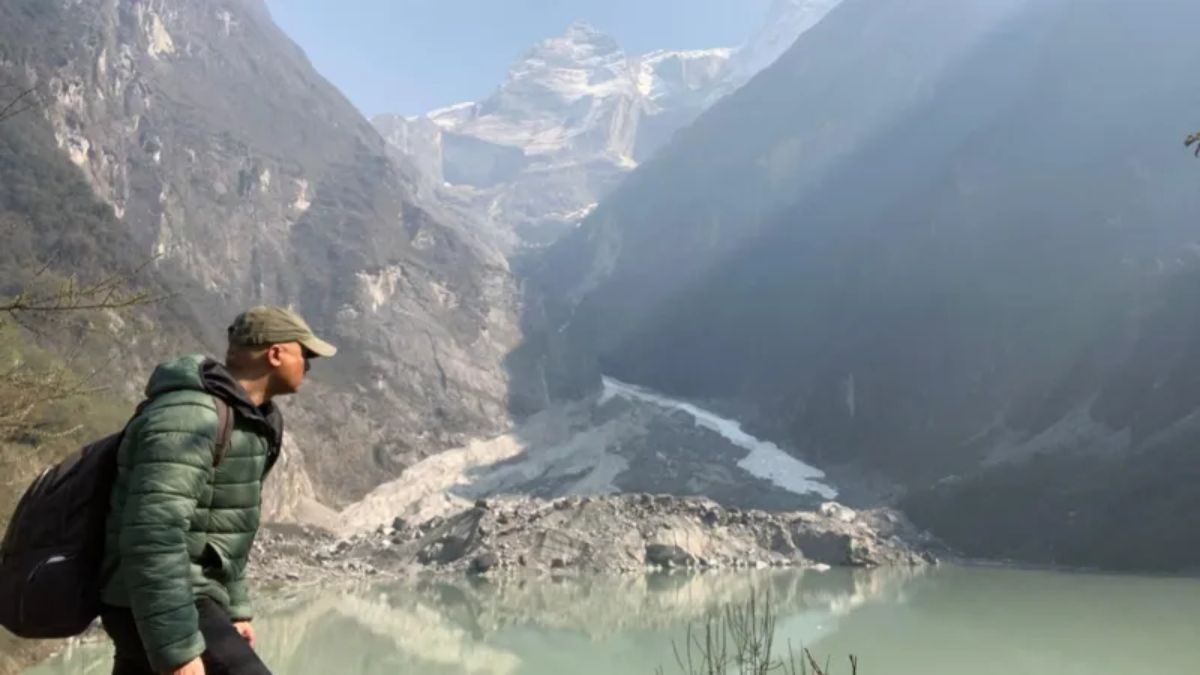
Trekking in Nepal’s Annapurna region, where haze obscures visibility of the epic mountains even at close range
I grew up in Nepal’s capital watching the Himalayas. Ever since I left, I’ve missed sweeping, panoramic views of some of the highest mountain peaks on Earth.
Each time I visit Kathmandu, I hope to catch a glimpse of the dramatic mountain range. But these days, there’s usually no luck.
The main culprit is severe air pollution that hangs as haze above the region.
And it’s happening even during the spring and autumn months, which once offered clear skies.
Just last April, the international flight I was in had to circle in the sky nearly 20 times before landing in Kathmandu, because of the hazy weather impacting visibility at the airport.
The hotel I checked in at was at a reasonable height from which mountains are visible on a clear day – but there was no such day during my two-week stay.
Even from the major vantage point of Nagarkot, just outside Kathmandu, all that could be seen was haze, as if the mountains did not exist.
“I no longer brand the place for views of ‘sunrise, sunset and Himalayas’ as I did in the past,” said Yogendra Shakya, who has been operating a hotel at Nagarkot since 1996.
“Since you can’t have those things mostly now because of the haze, I have rebranded it with history and culture as there are those tourism products as well here.”
During an earlier trip a year ago, I was hopeful I would be able to see the mighty Himalayan peaks on a trek in the mesmerising Annapurna region – but had hardly any luck there either.

View of the Himalayas on an increasingly rare clear day from the Nagarkot vantage point

The hazy view from the same vantage point during my most recent visit
Scientists say hazy conditions in the region are becoming increasingly intense and lasting longer, reducing visibility significantly.
Haze is formed by a combination of pollutants like dust and smoke particles from fires, reducing visibility to less than 5,000m (16,400ft). It remains stagnant in the sky during the dry season – which now lasts longer due to climate change.
June to September is the region’s rainy season, when Monsoon clouds rather than haze keep the mountains covered and visibility low.
Traditionally, March to May and October to November were the best times for business because that was when skies remained clear and visibility was best.
But with rising temperatures and a lack of rain, and worsening air pollution, the spring months are now seeing thick haze with low visibility. Those conditions are beginning as early as December.
‘No sighting means no business’
Lucky Chhetri, a pioneering female trekking guide in Nepal, said hazy conditions had led to a 40% decrease in business.
“In one case last year, we had to compensate a group of trekkers as our guides could not show them the Himalayas due to the hazy conditions,” she added
An Australian tourist who has visited Nepal more than a dozen times since 1986 described not seeing the mountains as a “major let-down”.
“It wasn’t like this 10 years ago but now the haze seems to have taken over and it is extraordinarily disappointing for visitors like me,” said John Carrol.
Krishna Acharya, the provincial chair of the Trekking Agents Association of Nepal in the western Gandaki province, says the trekking industry is in deep trouble.
“Our member trekking operators are getting depressed because no sighting of the Himalayas means no business. Many of them are even considering changing professions,” he told the BBC.

Trekking guide Lucky Chhetri says business is down because of the hazy condition
On the Indian side, near the central Himalayas, hoteliers and tour operators say haze is now denser and returns quicker than before.
“We have long dry spells and then a heavy downpour, unlike in the past. So with infrequent rain the haze persists for much longer,” said Malika Virdi, who heads a community-run tourism business in the state of Uttarakhand.
However, Ms Virdi says tourists are persistent – with many who didn’t catch the mountain range returning to try their luck again.
The western Himalayas in Pakistan have been relatively less affected by the haze because the mountains are relatively far from cities.
But locals say that even the ranges that were once easily visible from places like Peshawar and Gilgit are often no longer seen.
“The sheet of haze remains hanging for a longer period and we don’t see the mountains that we could in the past,” said Asif Shuja, the former head of Pakistan’s environmental protection agency.
Hazes and dust storms increasing
South Asian cities regularly top lists of places with highest levels of air pollution in the world.
Public health across the region has been badly impacted by the toxic air, which frequently causes travel disruption and school closures.
Vehicular and industrial emissions, dust from infrastructure construction and dry gravel roads as well as the open burning of waste are major sources of air pollution year-round.
This is compounded by soot from massive forest fires – which are increasing due to a longer dry season – and the burning of crop residues after the harvest by farmers in northern India, Pakistan and Nepal.
Weather conditions keeping warmer air above cooler air trap these pollutants and limit vertical air movement – preventing pollution from dispersing.
“Hazes and dust storms are increasing in South Asia, and this trend is projected to continue due to climate change and other factors,” Dr Someshwor Das from the South Asia Meteorological Association told the BBC.
In 2024, the number of hazy days recorded at the airport in Pokhara, a major tourism hub in western Nepal, was 168 – up from 23 in 2020 and 84 in 2021, according to Nepal’s department of hydrology and meteorology.

The Fishtail mountain in Nepal on a clear day

The same mountain range covered in haze, taken from roughly the same location
Experts believe the Himalayas are probably the worst affected mountain range in the world given their location in a populous and polluted region.
This could mean the scintillating view of the Himalayas could now largely be limited to photographs, paintings and postcards.
“We are left to do business with guilt when we are unable to show our clients the mountains that they pay us for,” said trekking leader Ms Chhetri.
“And there is nothing we can do about the haze.”
– Navin Singh Khadka
(Environment correspondent, BBC World Service)
FEATURES
Jewels linked to Buddha remains go to auction, sparking ethical debate
Published
3 weeks agoon
May 5, 2025By
editor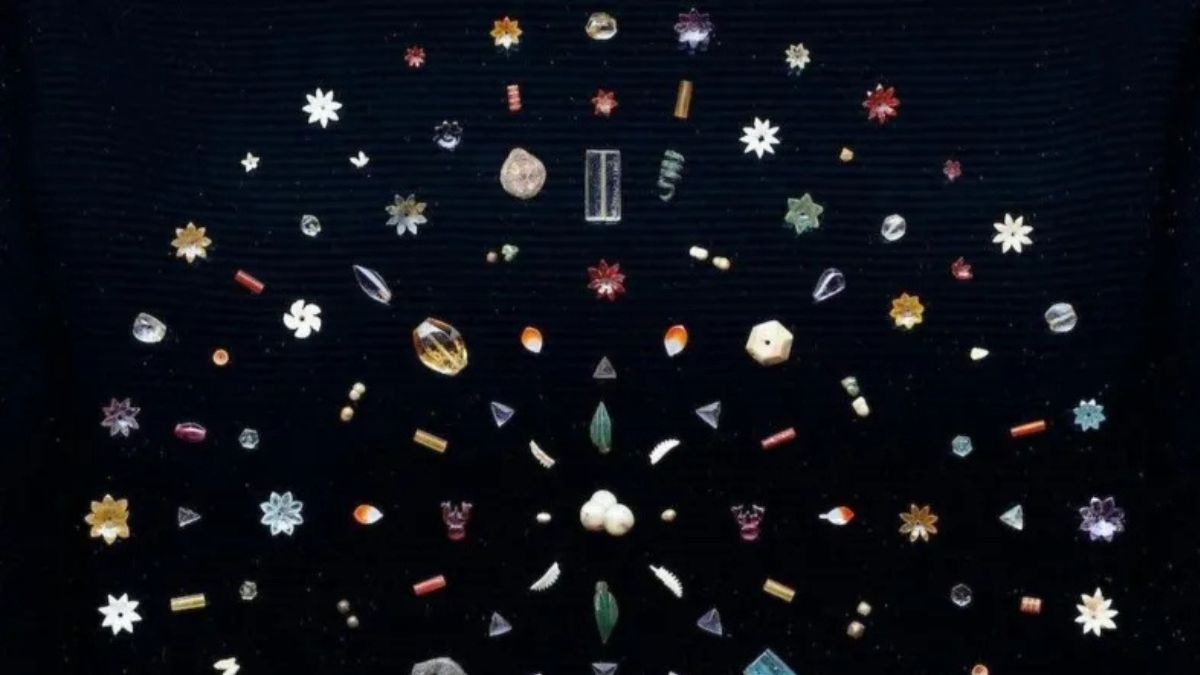
The jewels comprise nearly 1,800 pearls, rubies, sapphires, and patterned gold sheets
On Wednesday, a cache of dazzling jewels linked to the Buddha’s mortal remains, which have been hailed as one of the most astonishing archaeological finds of the modern era, will go under the hammer at Sotheby’s in Hong Kong.
For over a century these relics, unearthed from a dusty mound in northern India in 1898, have sat largely unseen, cradled by a private British collection.
Now, as the gems prepare to leave the custody of their keepers, they are stirring not just collectors’ appetites but also some unease.
They come from a glittering hoard of nearly 1,800 pearls, rubies, topaz, sapphires, and patterned gold sheets, first glimpsed deep inside a brick chamber in present-day Uttar Pradesh in India, near the Buddha’s birthplace.
Their discovery – alongside bone fragments identified by an inscribed urn as belonging to the Buddha himself – reverberated through the world of archaeology. Nicolas Chow, chairman of Sotheby’s Asia and worldwide head of Asian Art, believes this is “among the most extraordinary archaeological discoveries of all time”.
Yet as these relics now face the glare of the auction room, experts tell the BBC that a question hangs heavy: can the sale of treasures so intimately woven into India’s sacred past be considered ethical?

William Claxton Peppé, an English estate manager, excavated the stupa and found the jewels
In 1898, William Claxton Peppé, an English estate manager, excavated a stupa at Piprahwa, just south of Lumbini, where the Buddha is believed to have been born. He uncovered relics inscribed and consecrated nearly 2,000 years ago.
Historians agree these relics, intact until then, are the heritage of both the Buddha’s Sakya clan descendants and Buddhists worldwide. The bone relics have since been distributed to countries such as Thailand, Sri Lanka and Myanmar, where they continue to be venerated.
“Are the relics of the Buddha a commodity that can be treated like a work of art to be sold on the market?” wonders Naman Ahuja, a Delhi-based art historian. “And since they aren’t, how is the seller ethically authorised to auction them?
“Since the seller is termed the ‘custodian’, I would like to ask – custodian on whose behalf? Does custodianship permit them now to sell these relics?”
Chris Peppé, great-grandson of William, told the BBC the family looked into donating the relics, but all options presented problems and an auction seemed the “fairest and most transparent way to transfer these relics to Buddhists”.
Julian King, Sotheby’s international specialist and head of sale, Himalayan Art, New York told the BBC the auction house had made a thorough review of the jewels.
“As is the case with any important items and collectibles that are offered for sale at Sotheby’s, we conducted requisite due diligence, including in relation to authenticity and provenance, legality and other considerations in line with our policies and industry standards for artworks and treasures,” King said.
Ashley Thompson, of Soas University of London, and curator Conan Cheong, both experts in Southeast Asian art, have more questions. In a joint statement they told the BBC: “Other ethical questions raised by the sale are: should human remains be traded? And who gets to decide what are human remains or not? For many Buddhist practitioners around the world, the gems on sale are part and parcel of the bones and ash.”
The sale of the relics has also sparked concern among Buddhist leaders.
“The Buddha teaches us not to take other people’s possessions without permission,” Amal Abeyawardene of London-based British MahaBodhi Society, told the BBC. “Historical records indicate that the Sakyamuni clan were granted custody of these relics, as the Buddha emanated from their community. Their wish was for these relics to be preserved alongside adornments, such as these gems, so that they may be venerated in perpetuity by the Buddha’s followers.”

The jewels were unearthed from this stupa in Piprahwa, northern India in 1898
Chris Peppé has written that the jewels passed from his great-uncle to his cousin, and in 2013 came to him and two other cousins. That’s when he began researching their discovery by his great-grandfather.
The Los Angeles-based television director and film editor wrote he had found 1898 newspaper reports – from Reuters to the New York Tribune – announcing the find of Buddha’s remains.
“The colonisation of India by the British had been a source of some cultural shame for me [and continues to be] but, amidst the treasure hunters who hauled their finds back to England, there had also been people focused on the pursuit of knowledge,” Chris Peppé writes.
He noted his research revealed a lot about his ancestors who he had dismissed as “prejudiced Victorians from a bygone era”.
“I learned that Willie Peppé’s first wife chose to travel around India for her honeymoon and loved the country and its culture. Sadly, she died from an unspecified illness. I learned that my grandmother was outraged at the land laws that applied to Indian women.
“And I learned that the excavation of the stupa was an attempt by Willie Peppé to provide work for his tenant farmers who had fallen victim to the famine of 1897.”

The jewels are considered among the most extraordinary archaeological finds of all time
He writes his great-grandfather’s “technical diagrams of ramps and pulleys suggest that he was also a trained engineer who couldn’t resist a project”.
William Peppé handed the gems, relics and reliquaries to the colonial Indian government: the bone relics went to the Buddhist King of Siam (Rama V). Five relic urns, a stone chest and most other relics were sent to the Indian Museum in Kolkata – then the Imperial Museum of Calcutta.
Only a small “portion of duplicates”, which he was allowed to keep, remained in the Peppé family, he notes. (Sotheby’s notes say Peppé was allowed to keep approximately one-fifth of the discovery.)
Sources told the BBC the auction house considers the “duplicates” to be original items considered surplus to those donated, which the “Indian government permitted Peppé to retain”.
Over the past six years years, the gems have featured in major exhibitions, including one at The Met in 2023. The Peppé family has also launched a website to “share our research”.

Four containers made of steatite (a type of stone) and one made of rock crystal were found inside a sandstone box at the Piprahwa stupa
Some scholars argue Buddha relics should never be treated as market commodities.
“The Sotheby’s auction transforms these highly sacred materials into saleable objects, in continuation of acts of colonial violence which extracted them from a stupa and called them ‘gems’ and ‘objects of interest to Europeans’, creating a false division with the ash and bone fragments they were consecrated with,” say Thompson and Cheong.
Chris Peppé told the BBC that in all the monasteries he had visited “no Buddhists regard these as corporeal relics”.
“A few Buddhist academics at western universities have recently offered a convoluted, fact-defying logic whereby they may be regarded as such. It’s an academic construct that is not shared by Buddhists in general who are familiar with the details of the find,” he said.
Peppé said the family “looked into donation [of the relics] to temples and museums and they all presented different problems on closer scrutiny”.
“An auction seems the fairest and most transparent way to transfer these relics to Buddhists and we are confident that Sotheby’s will achieve that.”
Some also point to The Koh-i-Noor, seized by the British East India Company and now part of the Crown Jewels, with many Indians viewing it as stolen. Should the Buddha’s jewels be next?
“Repatriation, I believe, is seldom necessary,” says Ahuja. “Such rare and sacred relics that are unique and which define a land’s cultural history, however, deserve the government’s exceptional attention.”
– Soutik Biswas
(India correspondent – BBC News)
FEATURES
What has Sri Lanka gained from EU GSP “Plus” since 2007?
Published
3 weeks agoon
May 3, 2025By
editor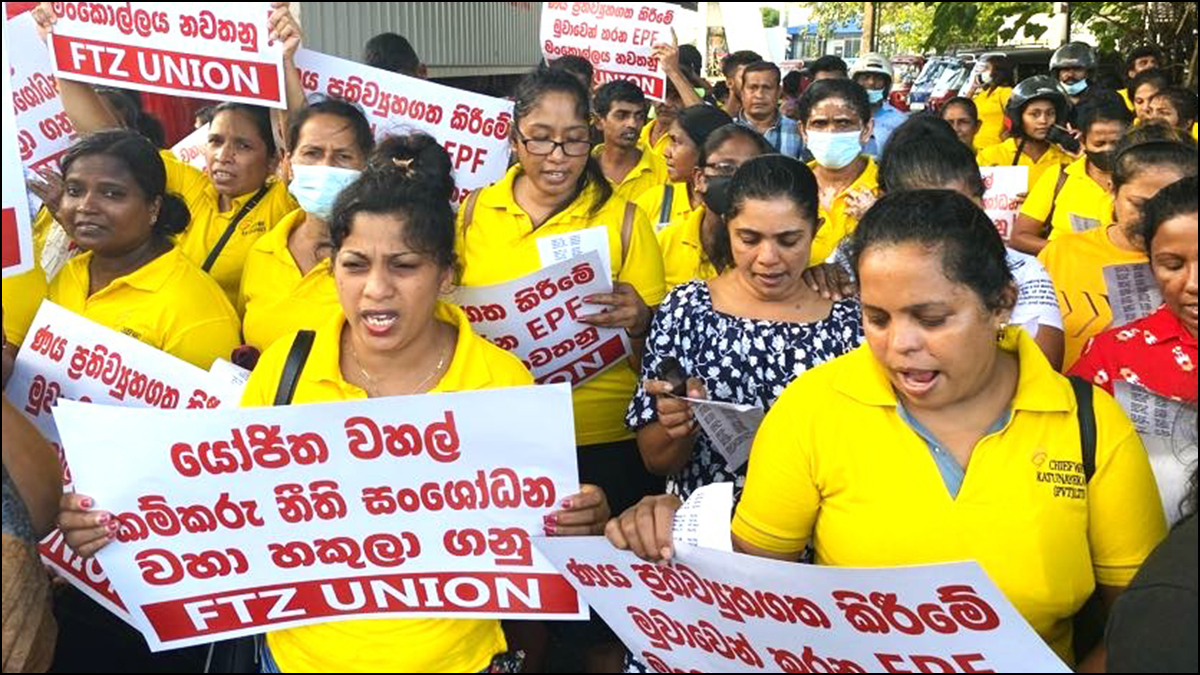
Let me say this straight and clear. “Sri Lanka has not gained anything on EU conditions laid down to qualify Sri Lanka for EU GSP+ post-Tsunami special offer”. What does the EU offer us and what have we to comply with?
EU offers “zero duty” exports for over 700 listed Sri Lankan products including apparels, rubber and fish products, bicycles, toys, tea and spices, electrical parts and few others to the EU market. That means, though our present basket is limited, over 700 Sri Lankan products can be sold in the EU market at subsidised “zero duty” prices, hopefully gaining increasing volumes. But who gains on increased value on sales?
With heavy corruption across geographical borders including money laundering, this is one major question that is not being asked and answered in detail by the government nor by the manufacturers. What is manufactured here for exports are exclusive “orders” from “Brands” received by product manufacturing companies through “Suppliers” on quoted and agreed prices. They not only have agreed prices, but agreed deadlines in handing over the finished product with pre-defined quality standards. What it means is, a “supplier” brings an order from a global “brand” and a manufacturing company with BOI-SL approval located in Sri Lanka that accepts the order is paid for its manufacture. That product is sold in a consumer market including the EU by its “brand” at a price fixed by the “brand”.
Once the supplier takes over the product from the Sri Lankan manufacturer, we don’t have anything to do with its sales in any consumer market. In simpler language, we don’t have anything to do with the product, once it leaves Colombo port. This too is important. The “zero duty” export concession is provided to listed Sri Lankan products and not to Sri Lanka. It is therefore enjoyed by the “brand” that owns the “product label”, perhaps with a share to the “supplier” on pre-agreed terms. May be, the SL manufacturer too gets “something” through the “supplier”, but that is wholly unofficial and out of public gaze. But for sure, that does not reach Sri Lanka and is not Sri Lanka’s gain.
What are we as a country expected to comply with, to continue with this GSP+ that brings us no economic benefits? First qualification is, Sri Lanka has to remain below the “Upper Middle Income” (UMI) category of countries. Thereafter, Sri Lankan government has to ensure implementation of 27 International Conventions that cover human rights, labour standards and rights, environmental protection and good governance. This does not mean ratification of “conventions” that SL has done in most instances, but also effectively implementing them with new laws and legal amendments where necessary.
Beyond economics, this requirement in effectively and sustainably democratising the Sri Lankan society is definitely worth complying with. Yet, all through past years when EU GSP+ was effective and in operation, neither SL governments nor the EU were serious about any of the 27 international conventions the EU imposed on SL to implement. The EU has sent 03 or 04 GSP+ Review Missions to Sri Lanka during these 17 or 18 years, that met numerous agencies, groups and individuals including the Head of State, relevant ministers, Opposition Leader and politicians, private sector trade unions and funded civil society activists in Colombo. All such review missions left Sri Lanka with a nod for an extension of GSP+ though with reservations at times on delays in implementation, except in 2010 when the EU was under pressure from Tamil Diaspora groups after the civil war was declared over in 2009 May.
This suspension was effective till 2017 for 07 whole years. The new government elected in January 2015 thereafter re-applied for GSP+ in 2016 June. What is important to note is that, during the 07 years SL was denied the “comfort” of “zero tariff” exports to Europe, Sri Lanka’s exports did not drop. According to the “Brief on International Trade” published by the Department of Commerce in October 2021, during the 02 years after the withdrawal of GSP+ the value of Sri Lankan products sold in European markets totalled 01.8 billion Euro. A little more than what it was in 2016, the year before the GSP+ suspension. Surprisingly, the value of merchandise from Sri Lanka sold in European markets during the next few years increased to around 02 billion Euros, before SL regained GSP+ in 2017. It only means, with or without EU GSP+, Sri Lankan products would be there in the EU market.
What needs to be stressed is, 10 plus years of EU GSP+ in full operation (that excludes the suspension), private sector labour that manufacture all Sri Lankan products in the EU markets, have not gained even the basic right to association and therefore not even collective bargaining, except in 01 factory out of over 1,600 factories. Repeal of the notorious repressive law, the PTA that was promised to be repealed way back in 2017 by the then government, is now said to take few more months if it does happen under the present regime and the EU Review Mission seems “okay” with it too. Environmental safety is under an axe with continued deforestation no matter who the government is. Breakdown in law, organised crime and mega corruption that involves the State hierarchy as well, would speak volumes about what “good governance” goes through despite EU monitoring of EU GSP+ with regular extensions.
End of the day, if the EU is not serious about having their conditions implemented, and if Sri Lankan governments can go on dragging their promises for democratisation over decades with no economic gains either, we are only wasting our tariff and tax incomes in billions doled out as annual incentives topping up free infrastructure provided to foreign direct investors, expecting them to provide us with much wanted forex. We need something more than a forensic audit to see how much we have lost as incentives given to export manufacture, a seriously corrupt sector most do not speak about.
That’s a wee bit about EU GSP+ and we Sri Lankans for now.
– Kusal Perera
2025 May 02

12-hr water cut in several areas of Colombo

Investigations underway to arrest 20 criminals hiding overseas



